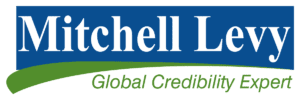Webinar: Turn Your Employees’ Expertise into Thought Leadership, Part 4 of 6
This post is Part 4 of 6 in a series covering a thought leadership webinar I co-hosted recently. Click through to catch up on the previous posts:
Part 1: Intro & Q&A, Part 1
Part 2: Q&A, Part 2
Part 3: What Is Thought Leadership and Why Is It Vital to Your Survival?
View the webinar here and download the slide deck/presentation here.
The Four Core Components of Employee Thought Leadership
There are four core components of employee thought leadership and as a big fan of acronyms, I’ve placed them into an easy-to-remember word—H.E.L.P. In order to transform from an expert to a thought leader, you need to get H.E.L.P. This acronym spells out the components you need to focus on to be successful.
When I talk to companies and when I’m thinking about who they are and what they do, I’m thinking about whether or not they have help, if they need help, etc. and I try to put myself in their shoes. When I’m shaking a person’s hand—whether it’s an individual, employer, or an employee within a company—as that person is giving me his or her thirty-second pitch, I’m thinking about the four elements of H.E.L.P.:

Let’s start with H = Healthy Following. Who knows about you and wants to know what you have to say? Build your following on a specific platform and use it to drive more success!
Example: Ashton Kutcher, Actor. We all know Ashton Kutcher as an actor; as an actor, he’s been successful at driving a large following (e.g., over 15 million followers on Twitter). In addition to being a well-known actor, Kutcher is also an investor in start-up companies. He uses his social media accounts to poll his audience and share some of the things that he’s doing with a much larger audience. Kutcher has built a platform to drive more success for him.
E = Exceptional Execution. Every time you perform a task or interact with someone, you need to execute well. Execute well when you’re speaking and writing, and deliver on your promises to show the benefits of your brand. You want to turn every opportunity that you have to touch your future advocates and turn them into advocates.
Example: Marcus Sheridan, Owner, River Pools. When the economic downturn occurred, Sheridan’s small company was hit hard. He realized that he needed to get more business and rise above the noise; what he ended up doing was blogging on everything that people would possibly want to know about pools. Google soon picked him up and turned his company around. Sheridan has used his thought leadership to become extremely successful to build an organization and a following.
L = Leadership. You need to continually share leadership pieces with your existing followers and build new ones. Grow your brand and then share your wisdom with others. Start authoring books, blogs, and webinars, and being present on social media, television, and radio.
Example: Jill Rowley, Social Selling Evangelist, Oracle. Rowley pushes social media and social selling. Her responsibility is to educate the new salesforce coming into Oracle on being able to do social selling (e.g., to make thought leaders within the organization).
P = Proven Platform. Use a robust platform to reach your existing following and build upon it. Share your thought leadership and stoke the fire to grow your network of followers. BTW: This does not refer to just your platform, but also the platforms of others that can be used to share your message.
Example: Marketo; Hubspot. Over the last two years, they’ve redefined the eBook and have made them into thirty-page PowerPoint presentations; what these companies both have, however, are platforms. If you look at the authors of those eBooks, they’re internal employees. If you look at the levels of those employees, they’re typically bottom-levels rather than top-levels. Both Marketo and Hubspot recognize the importance of social selling and having many people in the organization actually participating.

